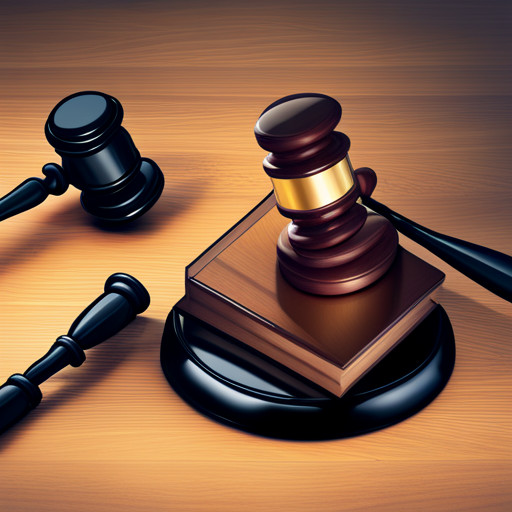The 4 Elements of Negligence You Need for a Strong Personal Injury Case
Under the intricate domain of personal injury law, the establishment of negligence constitutes a central component. This investigation elucidates the four pivotal elements of negligence—Duty of Care, Breach of Duty, Causation, and Verifiable Damages.

The discussion aims to provide a robust understanding of their significance in fortifying a personal injury case, thereby assisting in better legal decision-making and potential claim evaluations.
Key Takeaways
- The four elements of negligence (duty of care, breach of duty, causation, and verifiable damages) are crucial in establishing a strong personal injury case.
- Evidence plays a vital role in negligence cases, as it helps prove the presence of the four elements and determines the potential success of a personal injury claim.
- Duty of care is the initial element of the four-part test and establishes legal responsibility.
- Verifiable damages, including both tangible costs and subjective elements, serve as the final element in a negligence claim and are essential in proving financial losses and calculating non-economic damages.
Understanding the Four Elements of Negligence

In order to build a robust personal injury case, it is imperative to comprehend the four fundamental elements of negligence, which include the duty of care, breach of duty, causation, and verifiable damages.
The importance of evidence in negligence cases cannot be overemphasized, as it presents factual information that proves a breach of duty occurred. This evidence could range from medical reports to witness testimonies.
However, one common challenge in proving causation in personal injury claims is establishing a direct link between the accused's action and the harm suffered. Debates often arise over alternative causes or pre-existing conditions.
Consequently, understanding these elements and potential challenges can significantly enhance the strength of a personal injury case, promoting a more favorable outcome.
The Role of Duty of Care in Personal Injury Cases

Duty of Care plays a pivotal role in personal injury cases, as it establishes the legal responsibility one party holds to avoid causing harm to another. The role of duty of care in personal injury cases is paramount in establishing negligence. Its absence invalidates the claim. Duty of care importance in negligence cases cannot be overstated, as it forms the initial element of a four-part test.
| Element | Description | Importance |
|---|---|---|
| Duty of Care | The defendant's legal obligation | Establishes responsibility |
| Breach of Duty | Defendant's failure to fulfill duty | Proves negligence |
| Causation | Link between defendant's action and injury | Establishes direct cause |
| Damages | Actual harm to plaintiff | Quantifiable proof of injury |
Understanding these elements is essential in determining the potential success of a personal injury claim.
Establishing Breach of Duty and Causation in Negligence Claims

Establishing a breach of duty involves demonstrating that the defendant's actions deviated from a reasonable standard of care, while causation requires linking these actions directly to the plaintiff's injuries in negligence claims.
It is crucial in proving negligence to establish proximate cause, that is, showing that the defendant's breach directly resulted in the harm suffered by the plaintiff. This necessitates a meticulous examination of the facts, often calling for expert testimony to elucidate the link between the defendant's actions and the plaintiff's injury.
Equally important is demonstrating that the harm was foreseeable, a key component in establishing proximate cause.
Thus, successfully proving negligence is a complex process, necessitating a thorough and detailed approach to establish both breach of duty and causation.
Determining and Proving Damages in a Personal Injury Case

Verifiable damages, the final element in a negligence claim, entail providing evidence of actual losses or harm suffered as a result of the defendant's breach of duty. This process involves two significant steps: proving financial losses and calculating non-economic damages.
The former implies demonstrating tangible costs, such as medical bills, lost wages, or property damage. The latter, however, tends to be more complex, as it includes subjective elements like pain and suffering, loss of enjoyment of life, or emotional distress.
For successful claims, rigorous substantiation of these damages, through documentation or expert testimonies, is crucial. Establishing both aspects with accuracy and thoroughness not only strengthens the claim but also ensures fair compensation for the harm endured.
Frequently Asked Questions
What Steps Should I Take Immediately After Suffering a Personal Injury Due to Someone’s Negligence?
Immediately following a personal injury event due to perceived negligence, ensuring an emergency response is crucial. This includes immediate medical attention, irrespective of injury severity.
Concurrently, meticulous injury documentation should be initiated, capturing all details pertinent to the situation, such as environment, potential witnesses, and emotional distress.
These steps are instrumental in establishing a robust personal injury case, irrespective of the negligence elements.
Legal consultation is advised to guide further actions.
How Can I Determine if I Should Handle My Injury Claim Independently or Seek Legal Advice?
The determination to handle an injury claim independently or seek legal advice hinges on several factors. A claim evaluation, assessing the severity of injuries and complexity of negligence involved, is crucial.
For mild injuries and straightforward cases, self-representation may suffice. However, for severe injuries or complicated cases involving elements like medical malpractice or defective products, seeking legal representation is often beneficial.
It is advised to consult with a personal injury attorney for comprehensive guidance.
What Factors Do Attorneys Consider When Estimating the Worth of a Personal Injury Claim?
In assessing the worth of a personal injury claim, attorneys employ various Claim Valuation Techniques. These techniques consider factors such as the severity of physical injuries, the type of accident, and potential fault.
A critical aspect involves Understanding Liability, as it determines the party responsible for the damages. Additionally, the potential for future medical expenses, loss of earning capacity, and psychological trauma are also factored into the claim's value.
This comprehensive evaluation ensures fair compensation for the victim.
What Options Are Available for Me if I Don’t Qualify for a Case Review or Pre-Settlement Funding?
Various options exist for individuals who do not qualify for case review or pre-settlement funding in personal injury claims. These include:
- Engaging in insurance negotiations, where the claimant may directly negotiate with the responsible party's insurance company.
- Utilizing alternative dispute resolutions, such as mediation or arbitration, which can provide a platform for resolution without resorting to litigation.
It is crucial to seek legal counsel to guide these complex processes and ensure fair compensation.
What Role Can a Funding Company Play in My Personal Injury Case and How Can I Get in Touch With Them?
Funding companies can play a crucial role in personal injury cases by providing financial support during the litigation process. These entities offer pre-settlement funding to cover personal expenses while awaiting case settlement.
Benefits include financial stability and the ability to fully pursue the case without settling prematurely due to financial constraints.
Contacting funding companies can be facilitated through online platforms, where potential clients provide necessary information, such as attorney and contact details, to initiate the process.

This post has been generated by AI and was not reviewed by editors. This is Not legal advice. Please consult with an attorney.



